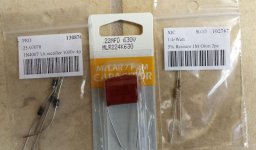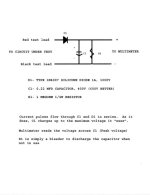Well, you may want to do that voltage check for the grey coil and see what you get cranking. I wish I knew the spec. As soon as I get the chance I will try and find that info. Those coils COULD be repaired...in my opinion...to produce the desired resistance value and, thus, the correct voltage.
Yes, you need to produce a hot enough spark that can overcome, not only the plug gap, but the compression pressure that is present in the cylinder. Should need around 5,000v to jump a gap and somewhat more than that to overcome the cylinder pressures.
If the ignition coil is breaking down, they just don't make that one any more and, again, I wish I had pursued some ideas I have had in the past about "experimenting" with currently available components as replacements. Then I could tell you.... "yeah, go ahead and buy a 1994 BF 8 coil and slap it on"....but I can't. I know how frustrating this probably is for you...it is for me I know.
I have a VERY full plate right now for chores but I will not forget about you and will keep trying to find you some answers from the junk I have laying about my place.
Yes, you need to produce a hot enough spark that can overcome, not only the plug gap, but the compression pressure that is present in the cylinder. Should need around 5,000v to jump a gap and somewhat more than that to overcome the cylinder pressures.
If the ignition coil is breaking down, they just don't make that one any more and, again, I wish I had pursued some ideas I have had in the past about "experimenting" with currently available components as replacements. Then I could tell you.... "yeah, go ahead and buy a 1994 BF 8 coil and slap it on"....but I can't. I know how frustrating this probably is for you...it is for me I know.
I have a VERY full plate right now for chores but I will not forget about you and will keep trying to find you some answers from the junk I have laying about my place.




